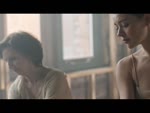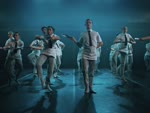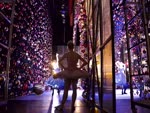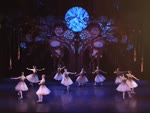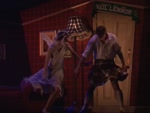FUKUSHIMA: 2011 - 2015
Full length video
Please read Understanding catalogue records for help interpreting this information and Using footage for more information about accessing this film.
Title: FUKUSHIMA: 2011 - 2015
Reference number: 12510
Date: 2016
Director: d. Yushin Toda
Production company: japan Desk Scotland
Sound: sound
Original format: unknown
Colour: col
Fiction: non-fiction
Running time: 74.19 mins
Description: japan Desk Scotland’s fourth documentary about the Fukushima nuclear accident in 2011, combining footage from the previous three films with new interviews.
Credits:
p. Fumi Nakabachi and Yushin Toda, japan Desk Scotland
comm. w. Yushin Toda
ph. Fumi Nakabachi
ed. Yushin Toda
m. Marius Pirhonen
proofreading Eleanor Small
Shotlist:
Filmmaker's synopsis:
This is japan Desk Scotland’s fourth Fukushima documentary, providing an overview of JDS’s work on Fukushima by combining key footages from previous documentaries with new interviews carried out in July 2015.
Immediately after the nuclear accident of March 2011, a group of Fukushima University scientists voluntarily made a radiation map, revealing that air dose rates were high outside the evacuation zone. The map is said to have played a part in changing the government’s evacuation plan. JDS have followed these Fukushima University scientists.
In July 2015, interviews were carried out with academics associated with Institute of Environmental Radioactivity, Fukushima University. At the time of the accident, the university had neither a research group on nuclear issues nor any facilities, but in 2013 it set up IER. The two academics interviewed have rich experience of research on Chernobyl: Alexei Kenoplev from Russia and Mark Zheleznyak from Ukraine. They compare the Fukushima accident with the Chernobyl one. The total amount of radioactivity In Fukushima is much less compared with Chernobyl. In Fukushima, radio caesium is strongly bound in the soil, and therefore it is less diluted in the water, compared with Chernobyl, indicating that radio caesium is less available to biological objects, such as fish.
Chernobyl was in the thoughts of those who made the radiation map. Kenji Nanba was inspired by Chernobyl’s long-term observation of environmental radioactivity and started a regular analysis of radio caesium in the water of Abukuma River. Yoshitaka Takagai started to invent a new tool to measure strontium-90, the main cause for cancer in Chernobyl.
Another interview carried out in July 2015 is with Kimiaki Saito, japan Atomic Energy Agency, who visited Chernobyl regularly in the 1990s to conduct research on environmental radioactivity. He explains the basics of radiation and people’s exposure to radiation, and compares people’s exposure between Fukushima with Chernobyl. At Chernobyl internal exposure from food intake and external exposure were almost equal, while at Fukushima external exposure was the major pathway, as restrictions on food intake were taken quickly.
In July 2015, Hisao Ota, Mayor of Kunimi Town, talks about a difficulty of persuading local residents to allow the construction of a Temporary Storage facility for radioactive soil removed as part of decontamination work. They agree its importance, but they don’t want to have it in their backyard.
The memories of the disaster of some Fukushima University students and staff are heard.
Interviewees (in order of their first appearances):
Kenji Nanba, Yoshitaka Takagai, Kencho Kawatsu, Yoshishige Kusano, Hisao Ohta, Jennell Parson, Hisatomo Suzuki, Kimiaki Saito, Alexei Kenoplev, Mark Zheleznyak, Hirofumi Tsukada, Miyuki Sasaki, Olena Pareniuk, Makoto Matsueda, Daichi Ito, Akira Sato, Fumiko Goto, Yuta Kera, Azusa Goto, Aya Yokoyama, Yasuhisa Yamada, Shogo Niiyama, and Mayuko Noda.


